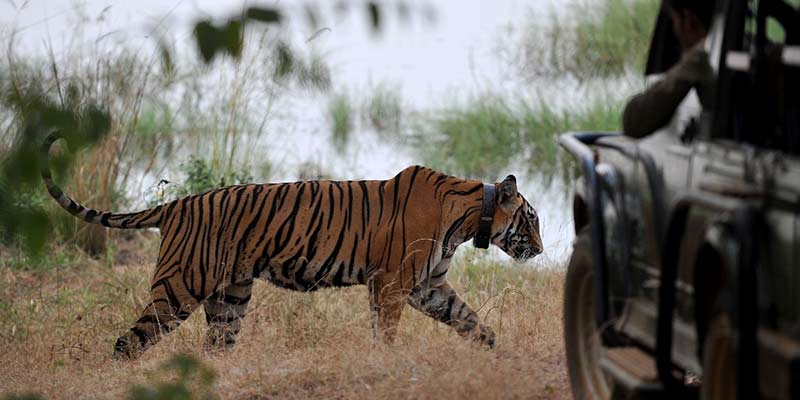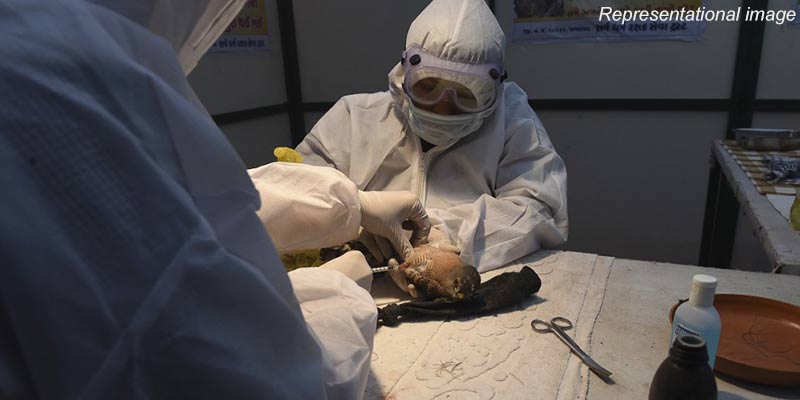- India
- Jan 06
- Kevin Savio Antony
Quarantine animals infected by bird flu, Centre tells states
• The recent report from Maharashtra highlights a significant concern in India’s wildlife health, with the state being the first to confirm the case of Avian Influenza, or bird flu (H5N1), among animals.
• The infected animals included three tigers and one leopard at the Gorewada Rescue Centre in Nagpur, where they tragically died in the last week of December 2024.
• This marks the first-time Avian Influenza has been detected in animals within India.
Key points:
• Cause of Infection: The virus was identified in the tigers and leopard after post-mortem examinations, with samples sent to the National Institute of High Security Animal Diseases (NIHSAD) in Bhopal for confirmation. The disease is believed to have been contracted from the chicken meat fed to the animals, though investigations are ongoing.
The virus has shown the ability to cross species barriers, impacting not only wild animals like tigers but also cattle, goats, and other wildlife, as seen in countries like the United States and Vietnam.
• Public Safety Measures: The ministry has highlighted the need for enhanced safety measures for zoo and rescue centre staff. This includes the provision of personal protective equipment (PPE) like gloves, masks, and suits, along with health screenings to detect flu-like symptoms.
Additionally, personnel are being educated on hygiene practices and the potential zoonotic (animal-to-human) risks associated with the virus.
• Ongoing Monitoring and Research: The One-Health approach has been emphasized, which involves integrated efforts across human health, wildlife health, and environmental sectors to mitigate the risks associated with the outbreak. The Indian Council of Agricultural Research (ICAR) has been tasked with confirming the virus strain and monitoring any unusual deaths in both poultry and other species.
H5N1 (Avian Influenza or Bird Flu)
• H5N1, also known as Avian Influenza or bird flu, is a highly contagious and harmful virus that primarily affects birds but can also spread to mammals.
• This strain of the virus first emerged in China in 1996 and rapidly evolved into a more dangerous form, leading to widespread outbreaks.
• By 2020, H5N1 had expanded globally, impacting regions in Europe, Asia, Africa, North America, South America, and even Antarctica.
• In India, the first outbreak of H5N1 occurred in Maharashtra and Gujarat in 2015.
Impact on Animals:
• While wild birds, especially endangered species like the California condor, are highly susceptible to the H5N1 virus, the disease has also been responsible for significant mortality in marine mammals such as sea lions and dolphins in areas like Chile and Peru.
• Poultry like chickens were traditionally the primary victims, but more recent outbreaks have affected mammals, including foxes, pumas, bears in North America, and farmed minks in Europe.
Human Risk and Spread Factors:
• While human infections with H5N1 are rare, they can occur through direct contact with infected birds or their droppings.
• Climate change may exacerbate the virus’s spread, as it alters bird migration patterns and increases the likelihood of interaction between different bird species.
World Health Organisation (WHO) Risk Assessment:
• The World Health Organisation (WHO) has stated that while the virus poses a low risk to the general population, human-to-human transmission remains uncommon. However, sporadic cases of infection continue to occur, mostly in areas where the virus is widespread in poultry.
• The WHO has evaluated the risk of H5N1 to public health as low, though it highlights the need for constant surveillance.
• The risk is greater in regions where the virus circulates among poultry, with potential for sporadic cases if human exposure occurs.
Preventive Measures and Guidelines:
• To reduce the spread of H5N1, the WHO recommends that individuals avoid high-risk environments, such as live animal markets, and take measures to practice good hygiene, particularly handwashing.
• It is also crucial to avoid consuming poultry that appears sick.
• People who have had exposure to infected animals should seek medical attention immediately.
• Additionally, any unusual cases of animal death, especially in poultry, should be reported to health authorities to monitor the situation and prevent further outbreaks.
(The author is a trainer for Civil Services aspirants.)


